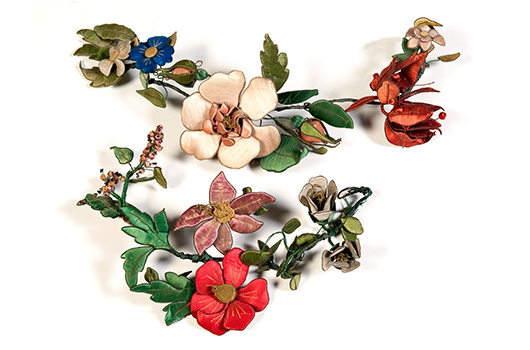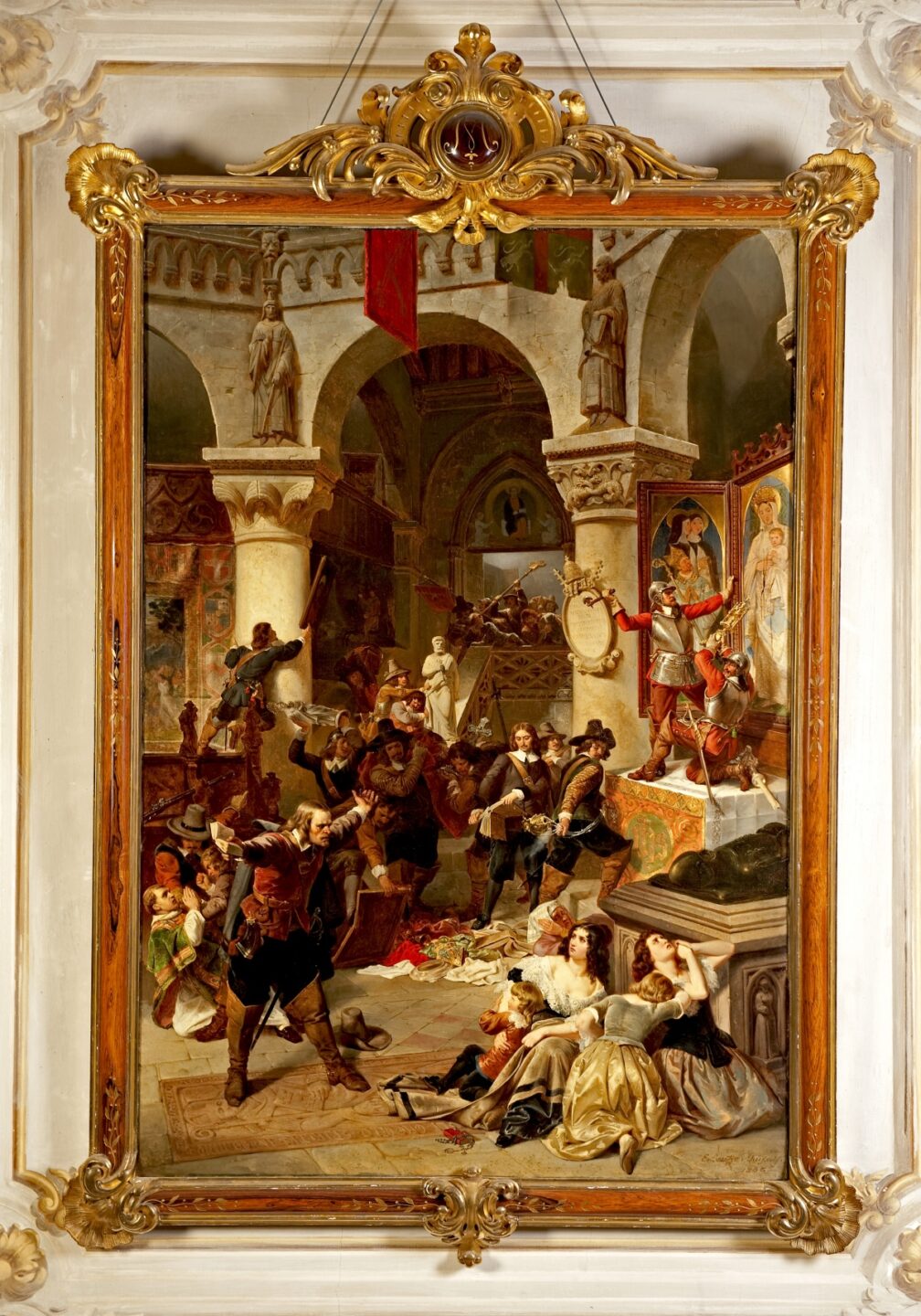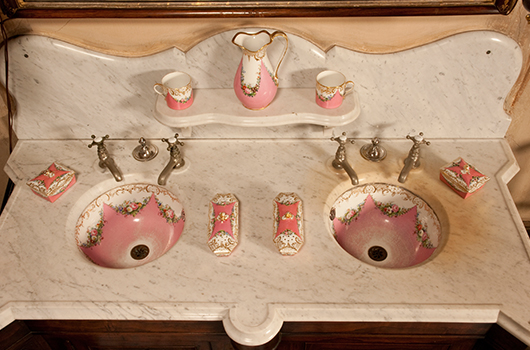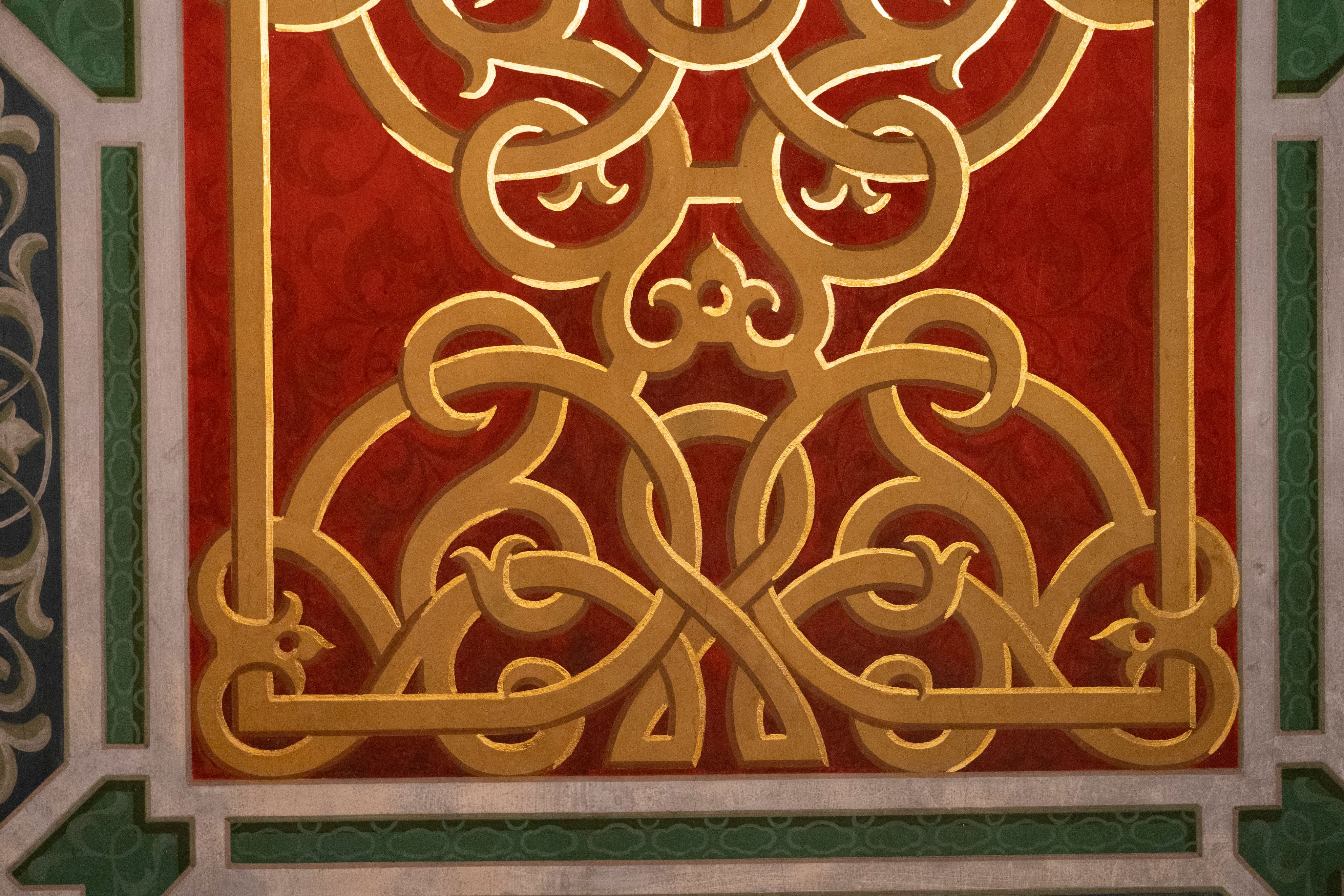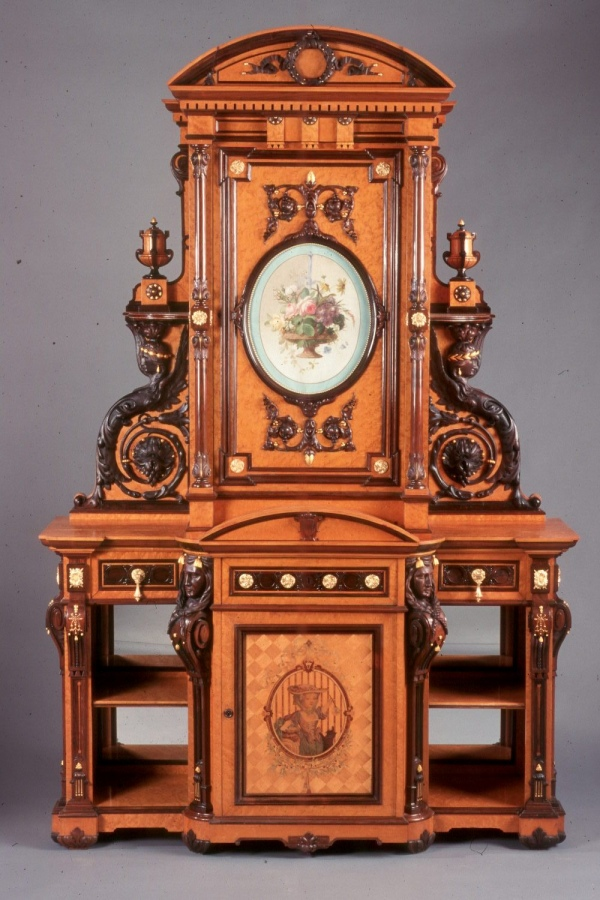
Cabinet
Victoria Mansion’s assemblage of furniture, window cornices, and mirror and picture frames is the largest collection of objects from Gustave Herter’s workshop in the United States. The figured maple and rosewood cabinet is one of the most important examples of Herter’s workmanship in the museum’s collection. It has carved, incised, painted, and inlaid ornament reflecting different stylistic influences. The winged females carved on the upper section recall designs of the baroque era. On the upper door is a floral oil painting of French neoclassical inspiration; the lower door has a rococo-style marquetry panel depicting a girl blowing bubbles.
